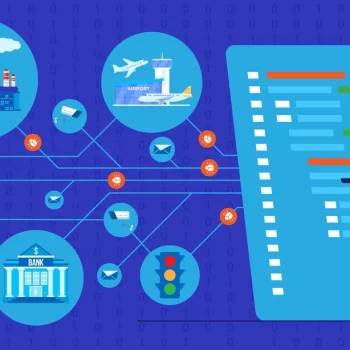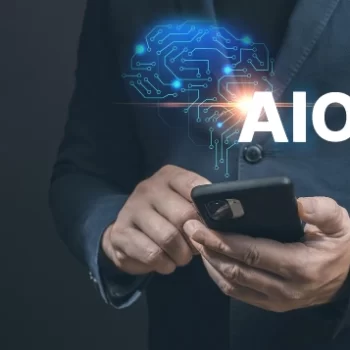In today’s technology-driven organizations, IT administrators face an ever-growing volume of IT service requests ranging from routine troubleshooting to complex system integrations. As the backbone of operational efficiency, they are continually searching for methods to streamline workflows and improve response times without affecting the service quality. Enter Generative AI is a transformative tool that has begun reshaping how IT departments handle service requests.
This blog explores the innovative ways IT admins can leverage Generative AI to enhance their service management processes, making them more efficient and adaptive to the needs of their users. By integrating AI into their strategies, IT professionals can not only manage current demands more effectively but also anticipate future challenges, ensuring they remain at the forefront of technological advancements.
Related blog: What is Service Request Management? Examples and Benefits
Understanding IT Service Requests
IT service requests are formal requests from a user for something new to be provided. This could include requests for new software to be installed, specific updates to be applied, the setup of new hardware, or corrections to existing IT services. For example, an employee might submit an IT service request for access to a particular business system or troubleshoot an issue with their email client.
IT administrators face several challenges when managing these requests. High volumes of requests can overwhelm IT staff, lead to slower response times, and increase user dissatisfaction. Prioritizing these requests often requires considerable judgment to balance urgency and impact on the business. Moreover, ensuring timely and effective responses is critical in maintaining operational efficiency and worker productivity.
Role of Generative AI in IT Service Management
IT administrators can leverage Generative AI to enhance the management of IT service requests in several key ways:
Automated Responses and Triage
Generative AI can be used to automatically respond to incoming IT service requests, providing initial guidance and gathering additional information. This can help in the initial classification and triage of requests, ensuring they are directed to the appropriate team or personnel without manual intervention.
Predictive Analysis
AI models can analyze historical data to predict common issues and their solutions. This predictive capability can help IT admins prepare resources in advance or even proactively address problems before they become widespread, thereby reducing downtime and improving the service quality.
Natural Language Processing (NLP)
AI systems can understand and process user queries submitted in natural language by employing NLP. This allows non-technical users to describe their issues in their own words, making the IT support process more accessible and user-friendly.
Chatbots and Virtual Assistants
AI-powered chatbots and virtual assistants can be available 24/7 to handle inquiries and provide instant support. These tools can resolve common issues autonomously, escalate more complex problems, and even guide users through troubleshooting steps, reducing the workload on human staff.
Service Ticket Analysis
Generative AI can analyze service tickets to identify trends, commonalities, and anomalies. This insight can help IT teams optimize response strategies, adjust resource allocation, and improve overall service management practices.
Customized User Support
AI can tailor support based on the user’s history, preferences, and specific needs. It can also adapt the complexity of its responses based on the user’s technical level, making interactions more effective and satisfying.
Integration and Workflow Automation
AI can be integrated with other IT management tools to automate workflows. For example, it can automatically update ticket statuses, send notifications, and synchronize data across platforms, streamlining operations and reducing human error.
Training and Support for IT Staff
Generative AI can assist in training IT staff by providing up-to-date information, simulating various IT scenarios for training purposes, and offering insights derived from data analysis. This can help IT personnel stay knowledgeable and efficient in handling emerging technologies and challenges.
By adopting these strategies, IT administrators can significantly improve the efficiency, effectiveness, and accessibility of IT service management, enhancing both operational performance and user satisfaction.
Case Studies
Several companies have successfully integrated Gen AI into their IT service management processes. For instance, a major multinational corporation implemented an AI system to manage its IT service requests. The AI was programmed to handle routine inquiries and escalate complex issues to human IT staff. This integration resulted in a 50% reduction in average response time and significantly improved user satisfaction scores.
Another example is a tech startup that utilized Gen AI to analyze service request trends and predict demand. This capability allowed them to adjust staffing levels and resources dynamically, leading to more efficient operations and a 30% cost saving on IT support.
Challenges and Ethical Considerations
There are some challenges to keep in mind when IT admins use Gen AI. For instance
Data Privacy
Integrating AI into IT service management raises important data privacy issues. Ensuring that sensitive information is handled securely and in compliance with data protection laws is paramount.
Reliance on Technology
There’s also the risk of becoming overly dependent on AI, potentially leading to degradation of human expertise. Furthermore, AI systems, while advanced, are not infallible and can misinterpret complex requests or anomalies.
Ethical Use of AI
Finally, the ethical use of AI in ITSM should be considered to ensure that these technologies augment human capabilities and do not replace human roles, thus avoiding job displacement.
However, while integrating generative AI into IT service management poses challenges, including data privacy concerns and ethical dilemmas, the potential benefits are compelling. These technologies promise to enhance efficiency, reduce costs, and reshape the future of IT operations and service delivery.
Related blog: Supplier and Vendor Management in IT Service Management (ITSM)
Conclusion
Integrating generative AI into IT service management holds promising potential for enhancing operational efficiency, improving user satisfaction, and reducing costs. However, it also introduces challenges that need careful consideration. Looking ahead, as AI technology continues to evolve, its role in ITSM is expected to grow, offering even more innovative ways to support IT operations and business processes. This evolution will undoubtedly shape the future landscape of IT service management, making it an exciting area to watch.



















